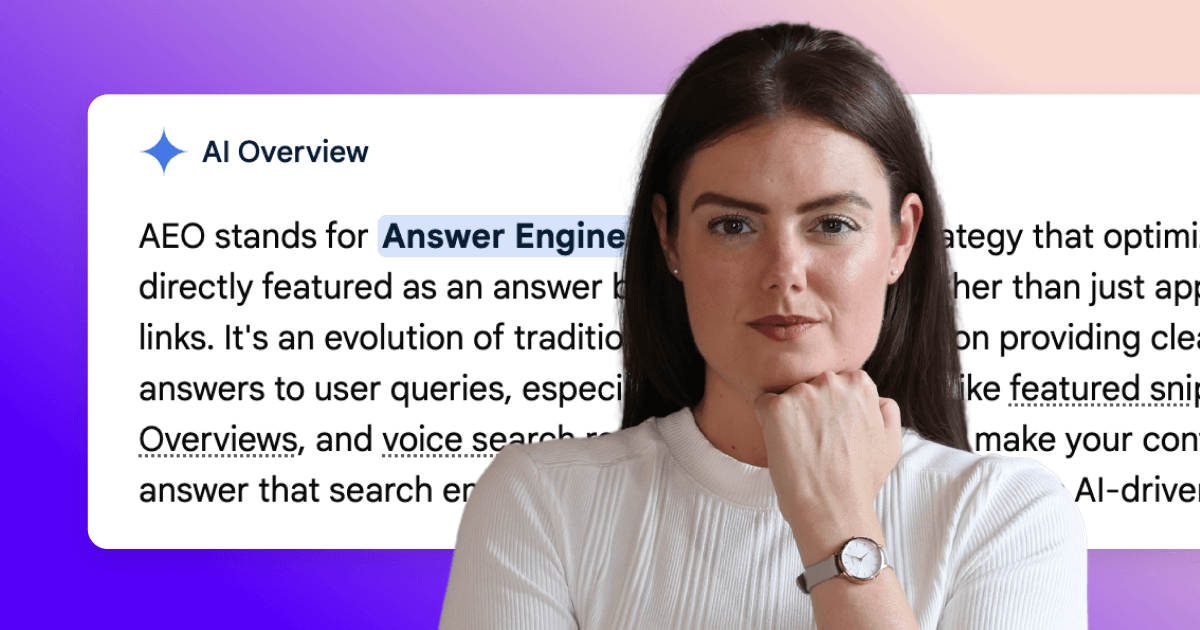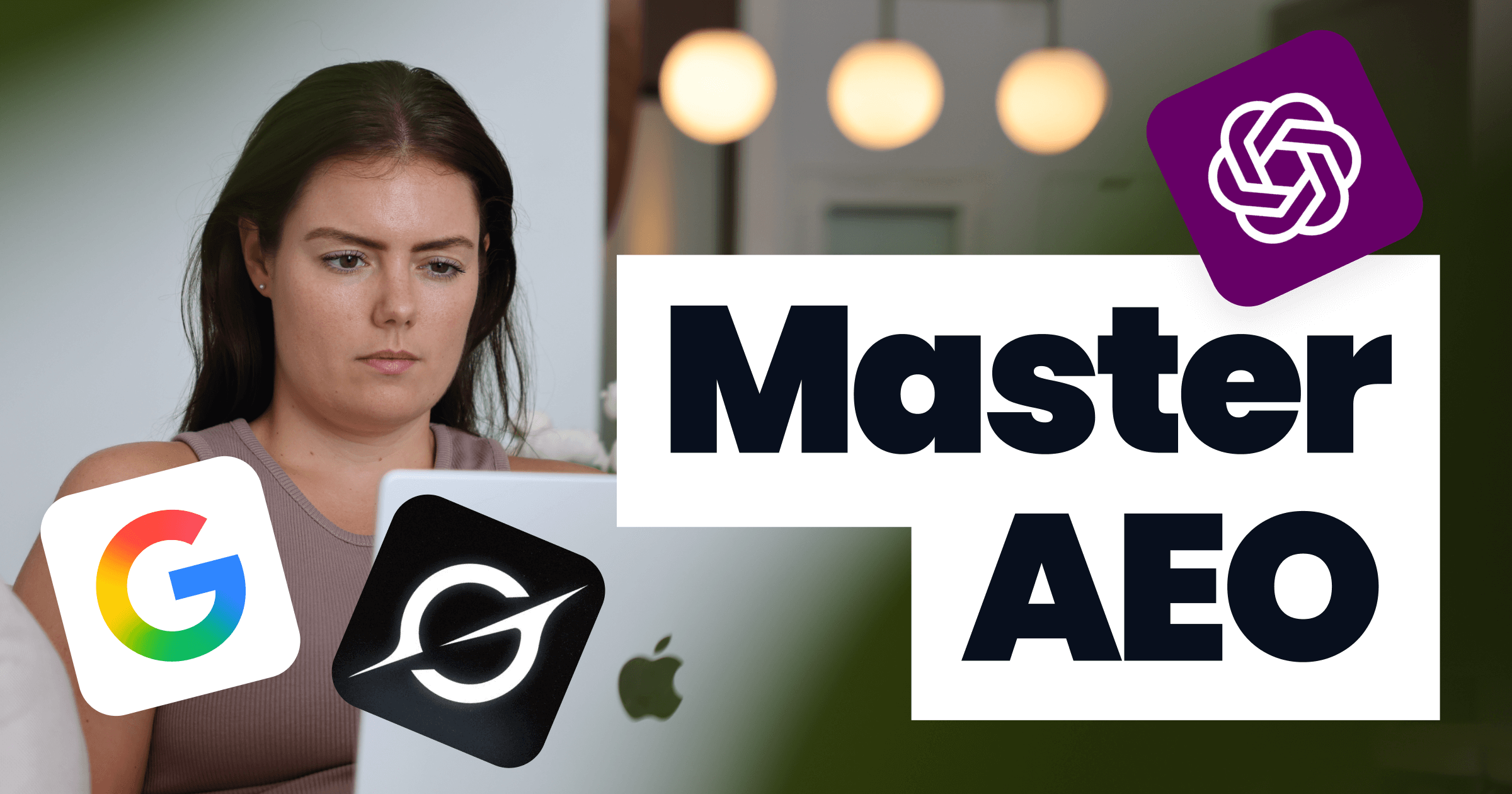
One of the most significant tech trends to come out of 2021 has most definitely been the emergence of the metaverse concept, a trend brought to the forefront of people’s minds primarily by Meta (Facebook) in recent months with their announcement to build softwares, technologies and devices to make the metaverse come to life.
Facebook’s transition to the metaverse has been a long time coming, back in 2014 they purchased their first virtual technology brand Oculus for $2 billion, following their release of their first VR headset ‘The Rift’. Other popular brands that have almost fully transitioned into the metaverse are mobile gaming platforms The Sandbox and Decentraland.
Before Facebook announced their transition into the metaverse by rebranding as ‘Meta’ late in 2021, the metaverse was a concept only understood and known by tech companies and gaming individuals.
The last six months has seen the conversation around metaverse spark into much more than just an idea or a far fetched concept - it has been developed to the point where building blocks have been put in place for the creation of a whole new, complex digital space.
You may have seen the American sci-fi movie ‘Ready Player One’ where the plot is based around the idea of an all-encompassing virtual world. The virtual world allows for work, gaming, socialising and just about anything else that we do in the ‘real’ world - well that’s exactly the thing we imagine the metaverse to evolve into.
What is the metaverse?
The metaverse is a network of 3D virtual worlds focused on social connection. Within the virtual worlds you can play games, socialise with other avatars, build where you like, and even buy virtual land and goods.
In theory, there is only one metaverse, since the term refers to a digital universe, but within the metaverse there are numerous worlds popping into existence by companies like Sandbox, Facebook, Epic Games and Decentraland, meaning each company or individual may have a different approach to the metaverse and the capabilities once inside their world.
Despite the potential confusion, one thing’s for sure; it will provide a brand new internet experience that merges new technologies such as augmented reality (AR) and virtual reality (VR) to create an embodied and immersive experience.
The metaverse will allow our physical and digital lives to intertwine, allowing users to feel present and use expressions with avatars that cannot be shown through a screen.
It (the metaverse) is a persistent, live digital universe that affords individuals a sense of agency, social presence, and shared spatial awareness, along with the ability to participate in an extensive virtual economy with profound societal impact. - Piers Kicks (Investment Team at BITKRAFT Ventures)
Although it appears Mark Zuckerberg (CEO of Meta) is the first to use the term metaverse, describing it as ‘the next succession of the mobile internet’, it is in fact not a new phenomenon. The term was first curated in the 1990s by author Neal Stephenson in his dystopian novel ‘Snow Crash’ whereby the metaverse was referred to as a 3D virtual world inhabited by avatars created by real people.
Since then, it has evolved from a niche concept studied and loved by tech enthusiasts, into a transformative digital landscape that many believe will shape our future.
Why has the metaverse been created?
Companies and investors have poured billions of dollars into the development of the technologies that will make up the metaverse, but what we want to know is why? The concept is not yet fully in existence, so why would hundreds of companies be betting on the success of the metaverse without seeing it in action?
We are going to explore this further and develop an understanding of the meaning, the need and the rules of the metaverse throughout this article.
The coronavirus pandemic saw businesses and families go through many financial and emotional hardships due to the inability to make physical human connections for long periods of time.
Without us realising, we have progressively spent more and more time in digital spaces throughout the pandemic; the use of hybrid office environments, working from home, video and online based education, and online social platforms have all forced us to rely heavily on digital spaces to go about our working and social lives.
The metaverse serves a purpose that would enable people to make these physical and emotional connections that are unobtainable through a computer screen, yet without having the actual physical presence.
Before the noticeable change in our increased daily usage of online activity in the pandemic, the last decade had already started to see several drastic changes in the way we interact, connect, work and socialise with others.
In 2018 the average person in the UK would spend an average of 3 hours 11 minutes online daily, by 2020 it increased to 4 hours 2 minutes, and will continue to rise. Not only are we spending more time online, the way we are spending our time online is changing too.
The global average for time spent playing video games is 8.45 hours a week per person, a figure which rises at an alarming rate each year. As each year comes with new and more advanced technology we have slowly become accustomed to the virtual reality and augmented reality technologies that are building the metaverse.
What can we expect from the metaverse?
Since the metaverse is not owned by a single person or institution, it is difficult to say exactly what the metaverse will mean for us.
Rather, it will be defined by each individual brand that works within the metaverse, and how they choose to shape their futures. And even then, the metaverse will be a different experience for every individual depending on how they want to use it.
It goes without saying that many aspects of our lives will be transformed with the metaverse. It will inevitably change the way we socialise, interact, connect and communicate with others whether it be in a work sense, or through our friendships.
From what we know so far, the metaverse will encourage changes in an educational setting by enabling students and teachers to carry out lessons and exams without the need of a physical presence.
There have already been changes taking place from a work perspective, with the metaverse allowing meetings and workshops to go ahead in a virtual environment with the use of avatars.
The gaming industry has already seen a tremendous change in the technologies used and the response from gamers has been nothing but positive.
Let’s dig a little deeper to find out how we can expect the metaverse to shape our future.
Key features of the metaverse that you need to know
A focus on ‘presence’
Providing a sense that you’re physically engaging with places and people instead of watching them through a screen. Spatial and Facebook Horizon (Meta softwares) will allow you to sit around a virtual table with your co-workers for instance, which could feel more natural to some people than looking at a grid full of tiny faces on a Zoom call.
Gymshark, an athleisure and gym brand, led by example in January 2022 when the CEO of the brand, Ben Francis, and CBO Noel Mack, held their first ever meeting IN the metaverse.
They posted clips from the meeting to social media creating immense interest in this newfound technology. Mack reflected on the experience after; ‘it is incredibly immersive and high-resolution when you experience it for real. We'll be experimenting with this for sure.’
A focus is on interoperability
The capability of softwares communicating to provide users an easy and seamless transition from one virtual space to another. This is an important component to the metaverse when it comes to considering currencies and the economy within the metaverse, allowing NFT’s to be transferable into different virtual spaces.
Blockchain technology system
The metaverse uses blockchain technology in which a record of transactions made in a cryptocurrency are maintained across several computers are linked in a network. Using blockchain technology, users can buy virtual land or other digital assets using cryptocurrencies such as Bitcoin or Ethereum.
NFTs feature in the metaverse
An NFT is a non-fungible token - essentially a one of a kind digital trading card that can’t be replaced with another. NFT’s tend to be music or art, and they help to bridge the metaverse, facilitating all aspects of identity, community and social experiences in the metaverse.
There is only one metaverse
The metaverse refers to an alternate, digital universe, but there are opportunities to have infinite virtual spaces (or worlds) within the metaverse. With there being just one metaverse, it is not governed by any one person or company - also meaning that one company cannot decide to take ownership of the metaverse. It is an open space that requires multiple companies to build upon and add to - just like the internet.
The metaverse and Web3.0 are not the same thing
Although you may hear the terms used interchangeably it is important to not get them confused. Web3.0, like metaverse, is not yet in existence, it is a version of the internet in the future. The metaverse will be the integration of the internet into our daily lives.
Gaming
This is currently the biggest sector that is getting involved in the metaverse as many companies in this sector already use the technologies it is built upon.
Ecommerce
In upcoming years, it is expected we will see new forms of e-commerce emerge as brands transition to the metaverse. Brands will be able offer their customers an enriched shopping experience that is hyper-personalised - all without worrying about the physical world’s many barriers such as local and national lockdowns, store issues or opening hours.
The 7 layers of the metaverse
The metaverse cannot simply be built by only a few companies if it is to reach its desired purpose of shaping the future.
It takes a lot of research, work and money to be able to build the infrastructure of such a complex digital space. Jon Radoff, author of ‘Building the Metaverse’, outlined 7 of the distinctive components that are required to build the metaverse:

- Infrastructure – Connectivity technologies like 5G, Wi-Fi, the cloud, and hi-tech materials such as GPUs.
- Human interface – VR headsets, AR glasses, haptics, and other technologies to join the metaverse.
- Decentralisation – Blockchain interface, artificial intelligence, edge computing, and other tools of democratisation.
- Spatial computing – 3D visualisation and modelling frameworks.
- Creator economy – Design tools, digital assets, and e-commerce establishments
- Discovery – The content engine driving engagement, including ads, social media, ratings, reviews, etc.
- Experiences – VR equivalents of digital apps for gaming, events, work, shopping, etc.
AR, VR and the metaverse
You might be reading this thinking ‘what on earth are they talking about with AR and VR?’ If so, here’s a quick run through of definitions:
What is Augmented Reality? (AR)
An enhanced version of the real physical world, it is achieved through the use of advanced technology allowing digital visual elements, sounds, or other sensory stimuli to be delivered right to your smartphone or device.
What is Virtual reality? (VR)
A 3D, computer generated environment which can be explored and interacted with by the user. The user who creates it becomes part of the virtual world, immersed within the environment, moving objects around or interacting with different elements using different actions.
Statista has forecast that the AR and VR combined market will be expected to reach close to 300 billion dollars by 2024.
How will the metaverse use AR and VR?
The future of the metaverse relies heavily on AR and VR technologies to bring the digital world to life. Developers are hoping to create glasses that can be worn out and about to integrate AR into your everyday life, using graphics and other sensory elements through the glasses to enhance your quality of life.
For example, if you wore AR glasses on your bike ride you could get real time directions and traffic updates with visuals pointing to where you should be going, this would avoid distractions of a handheld device. Or if you were in a clothing shop you could see how many products were left in stock, if they had your size or a different colour you may want to try on without having to ask a store assistant.
VR technology is a little different, in the sense that the headsets used in VR are not practical to wear out and about - imagine everyone trying to navigate the streets with those huge goggles on?!
By using VR, the metaverse hopes to change the way we consume content, going from 2D to a fully immersive 3D environment. As a shared virtual space, the use of VR in the metaverse will help to connect the virtual and physical worlds together.
VR will be particularly useful for those in education and work, providing virtual office spaces and virtual classrooms to interact with colleagues and students as if they were right there in the room with you.
Cryptocurrency and the metaverse
We can’t write about the metaverse without mentioning cryptocurrency and how the two interlink. We realise that this is a whole new conversation in itself so we’ll save the in depth discussion for another article, but let’s try and gain a basic understanding of the two together.
Again, to avoid any confusion, cryptocurrency is a digital currency in which transactions are verified and records stored by a decentralised system using cryptography, making it almost impossible to counterfeit.
We’ve already briefly mentioned the use of blockchain technology within the metaverse, this is where cryptocurrency fits in. The blockchain platforms up to this point have been proven to be unhackable and immutable, which is of utmost importance to a digital landscape and economy to ensure the transactions that are made are safe and secure.
Having a crypto-enabled payment process will be even more useful in an entirely virtual landscape like the metaverse. As it grows and evolves, both blockchain and crypto assets will play a prominent role in the future implementation of the idea. This will give users and investors peace of mind that their payments and transactions are fully secure and can be recognised across multiple virtual spaces within the metaverse.
Companies building in the metaverse
Roblox:
Roblox is a successful online game service as well as a game creation system - allowing other users to create and play their own games. It was founded in 2004, and the platform now has a global figure of 47 million daily active users, as well as more than 9 million developers who build out ‘experiences’ within the platform.
At Roblox, their focus is on building an immersive world using existing gaming tech, rather than investing money and time into more advanced tech like AR and VR. Albeit, the CBO of Roblox, Craig Donato, has already emphasised that they are in the early days of the metaverse. Though it will be a while before they see things like interoperability between metaverses and full immersion.
The Sandbox:
We’ve briefly mentioned The Sandbox in this article already, but to give you a better understanding of the company and what they are doing in relation to the metaverse we will give you a run through of their background.
The project was initially started in 2012 on mobile platforms, which to date have gathered more than 40 million (!!) global installs on mobile devices. By January 2018, The Sandbox project started development for a new 3D, immersive, multiplayer version of the game – using blockchain technology to create a virtual world where players can build, own, and monetise their gaming experiences.
The Sandbox is one of the few most successful gaming softwares to successfully integrate their game into the metaverse. Their aim is to influence others in the industry to bring blockchain technology into mainstream gaming. To do so they offer the advantages of true ownership, digital scarcity, monetisation capabilities, and most importantly - interoperability across games.
Microsoft:
As one of the three major console manufacturers globally, Microsoft announcing plans to enter into the metaverse landscape with their consoles and their games is a huge step forward for all those involved in the metaverse.
Microsoft boasts some of the most popular video games to date; Minecraft and Halo. These video games are already geared up to be in the metaverse as the games allow players to build 3D worlds and then explore and craft items within their new world. CEO, Satya Nadella, states that their aim to produce more immersive and 3D experiences is all about presence:
“Creating more presence, more human connection, and giving all the options for people to be able to participate in the communities that they're most interested in”.
In recent months Microsoft have worked tirelessly to close one of their biggest deals yet, with the purchase of Activision for $68.7 million. This is Microsoft’s biggest push into gaming, allowing them to implement their AR and VR technologies within some of the most popular games already played - such as Call of Duty, and World of Warcraft.
Epic Games
Tim Sweeney is the CEO of Epic Games, a name you may have heard in recent months following Mark Zuckerberg’s announcement on Meta’s metaverse plans - Sweeney is extremely enthusiastic about the opportunity.
Epic Games is the owner of the popular online video game Fortnite. With more than 60 million Fortnite monthly active users, equating to 4 million concurrent players every day, it is easily the most popular battle royale game.
Sweeney is optimistic about the future of metaverse, hoping that over time it has the potential to build and become a multi trillion-dollar part of the global economy. The CEO has set Epic Games critical targets to push them closer to being the leaders in the metaverse ‘race’;
- Expand Fortnite from a game with 60 million monthly active users to an experience reaching a billion in the future
- Capitalise on their content-creation tools like the Unreal Engine for 3D graphics to enable a real-time 3D presence
Disney
Disney is another globally recognised enterprise setting themselves up to enter the metaverse. They released their plans to join the movement and transition into the metaverse in November 2021.
CEO, Bob Chapek, iterated that Disney has never been one to fall behind in technological advancements, and that this wouldn’t be any different.
“The Walt Disney Company has a long track record as an early adopter in the use of technology to enhance the entertainment experience.”
Although they have not yet revealed any concrete plans to assist with their transition, Chapek mentioned that their popular streaming service (118million subscribers worldwide) Disney+ would be one of the first places they will move to for a virtual reality experience.
Walmart
American retail corporation Walmart are yet to announce their transition into the metaverse, but they have been quietly planning for it over recent months.
Late in 2021, Walmart filed for several trademarks indicating their intent to make and sell virtual goods.
They also plan to offer customers a virtual currency and NFT’s, if that’s not a sign they’re preparing for the metaverse we don’t know what is!
Meta (formerly Facebook):
As mentioned, the conversation around the metaverse was propelled into the media in October 2021 after CEO of Facebook, Mark Zuckerberg, changed the name of the most popular social media platform to Meta.
Zuckerberg released an hour-long video ‘The metaverse and how we’ll build it together’ explaining Meta’s idea of what the metaverse will look like with their input. Meta explains what they're doing and why they're doing it:
“The metaverse is the next evolution of social connection. Our company’s vision is to help bring the metaverse to life, so we are changing our name to reflect our commitment to this future.”
It is clear that Meta’s focus is not just on making the metaverse work for businesses, but for all aspects of life: social connections, entertainment, gaming, fitness, work, education and commerce. Many people have questioned whether this will just lead to a full digital takeover of our lives as we know it, but Zuckerberg assured users that ‘It’s not about spending more time on screens, it’s about making the time we already spend on it better’.
Meta has revealed that they will be building on advanced technologies and software including their platform Horizon and integrating VR and AR technologies to create their own headset ‘Project Cumbria’ and glasses ‘Nazare’.
When is the metaverse actually happening?
We’re just as intrigued as you are about the timings and logistics of when the metaverse will be in existence.
What we do know though is that there are endless different projects going on behind the scenes to help bring the concept to life. The issue is that the concept is reliant on new companies getting involved and putting together their own building blocks to participate in a whole new virtual world, making it difficult to provide a timescale.
Why is everyone talking about the metaverse if it doesn’t even exist yet?
The metaverse is clearly not just a trend that is going to go away overnight, it seems as though it is here to stay. From what we’ve learnt so far, the metaverse is about to shape our future in everything we do, from our working lives, our social lives, all the way down to our retail experiences and sporting worlds.
But why now? Interestingly, the metaverse has come at a time when there is increasing distrust in governments from its citizens all over the world. The pandemic saw a huge shift in people's perceptions of the government, which may be why so many people are eager to get started in the metaverse.
The metaverse offers a decentralised network and economy - meaning that it cannot be governed by any one person, offering a sense of security and safety for a person's money and life.
The projected success of the metaverse however is phenomenal - Grayscale Investments have estimated it to be a 1 trillion-dollar revenue opportunity. Hence why so many investors are keen to get in their investments early without seeing the finished product.
Whilst the building blocks are still underway, we can all take some time to digest what’s happening and get our heads around the concept - without frying our brains! Before we’re thrown into the craziness of the metaverse we can learn everything we need to know to prepare us, this is the first article in our ‘Metaverse’ series.
How is Beyond preparing for the metaverse?
At Beyond we are already putting plans in place to prepare us for our very own metaverse experience. We hope our clients and prospect customers will join us in our upcoming workshops to get a glimpse into what our metaverse experience has to offer.
There are also a number of other exciting projects going on behind the scenes. We have our first clients paying their fees in cryptocurrency, our designers are working hard to design our own NFT’s, and we are already buying digital land for our clients to grow their businesses in.
We are also working on something much bigger that we can’t reveal too much about just yet, but keep checking back for updates and clues over the coming months. It’s a VERY exciting space and we are only just getting started.

Just a heads up, some of the links in this article may be affiliate links, meaning we may make a small commission on any sign-ups or purchases for the tools we recommend.






































